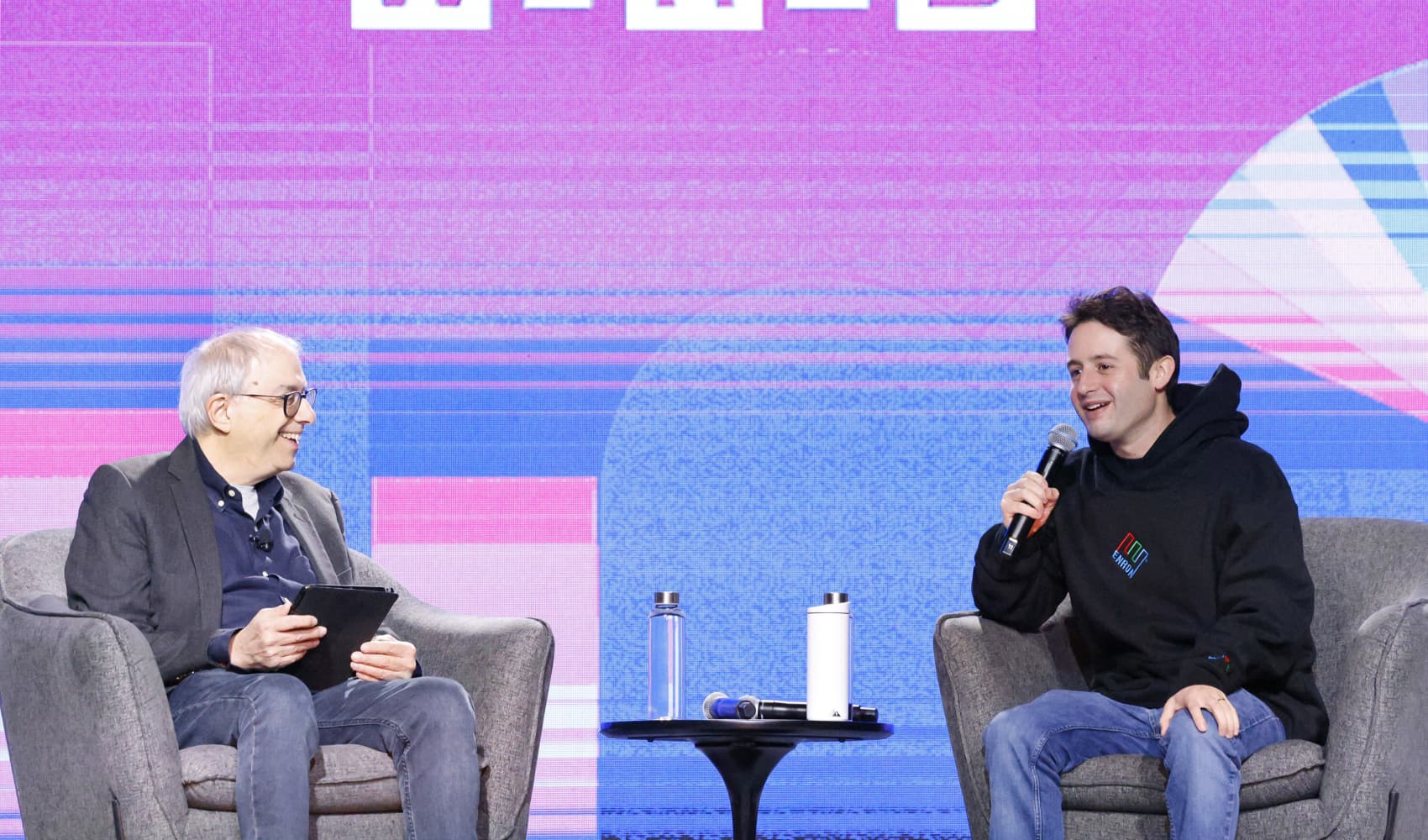Figma's AI Design: Code Websites in Minutes!
Figma's "Vibe-Coding" AI: Design to Code in a Flash!
Introduction: The Future of Design is Here
Imagine describing your dream website and, *poof*, it exists! That's not magic, that's the potential of AI-powered design, and Figma is leaping into the fray. Figma, the design software giant, has just unveiled "Figma Make," a game-changing AI feature that automates the process of turning ideas into working code. Forget tedious coding sessions; Figma is bringing "vibe-coding" to the mainstream. Are you ready to redefine how you build websites and apps?
What is "Vibe-Coding" Anyway?
You might be scratching your head, wondering what "vibe-coding" even *is*. Think of it like this: you tell the AI what kind of website or app you want, describe the *vibe* (hence the name), and the AI does the heavy lifting, generating the code. It's like having a super-powered coding assistant that understands your vision. Companies like Cursor and Windsurf have been pioneering this space, and now Figma is taking it to the next level.
Figma Make: Your AI Design Assistant
Figma Make promises to let users describe an app or website idea or even pick an existing design and have the AI generate working code. This isn't just about pretty pictures; it's about functional prototypes and even full-fledged applications brought to life with minimal coding effort. This begs the question: could this democratize app development and website design for everyone?
The Rise of AI in Design: A Paradigm Shift
The introduction of Figma Make highlights a significant shift in the design landscape. We're moving from a world where designers meticulously craft every pixel and then hand it off to developers, to a world where AI bridges the gap, enabling faster iteration and more creative exploration. It's like going from horse-drawn carriage to a self-driving car – a revolutionary leap forward.
Google, Microsoft, and the Vibe-Coding Race
Figma isn't alone in this AI race. Tech giants like Google and Microsoft have also been touting their own "vibe-coding" tools. Even OpenAI, the company behind ChatGPT, has been exploring this area, reportedly holding acquisition talks with Windsurf. The competition is heating up, and the beneficiaries will be designers and developers who can leverage these powerful tools.
Figma Sites: Functional Websites Made Easy
But wait, there's more! Figma also has a separate, forthcoming tool called Figma Sites. This tool aims to create functional websites directly from designs. Imagine designing your website in Figma as you normally would, and then, with a few clicks, transforming it into a live, interactive site. This could be a game-changer for small businesses and individuals who need a professional online presence without the technical headaches.
Who Benefits from Figma's AI Revolution?
So, who exactly stands to gain from these new AI features? The answer is almost everyone involved in the design and development process:
- Designers: Spend less time on repetitive tasks and more time on creative problem-solving.
- Developers: Receive cleaner, more structured code generated by AI.
- Startups: Rapidly prototype and launch products with limited resources.
- Small Businesses: Create professional websites and apps without hiring expensive developers.
The Potential Downsides: Will AI Replace Designers?
With all the excitement surrounding AI, it's natural to wonder about the potential downsides. Will AI replace designers and developers? While AI will undoubtedly automate certain tasks, it's unlikely to completely replace human creativity and problem-solving skills. Think of AI as a powerful tool that *augments* human capabilities, not replaces them. The best results will come from humans and AI working together.
Harnessing the Power of AI for Better Design Workflows
Streamlining Design-to-Code Handoffs
One of the biggest pain points in the design process is the handoff from design to development. Figma Make can streamline this process by generating code that is closer to the final product, reducing the need for extensive manual coding and debugging.
Rapid Prototyping and Iteration
AI-powered design tools make it faster and easier to experiment with different ideas and iterate on designs. This allows designers to quickly test hypotheses and get feedback, leading to better products. This is like having a super-fast "try-before-you-build" mode.
Democratizing Access to Design
By lowering the technical barriers to entry, AI can democratize access to design, empowering more people to create their own websites, apps, and digital products. This could lead to a surge of innovation and creativity from unexpected places.
Ethical Considerations: AI Bias and Responsible Design
As we embrace AI in design, it's crucial to consider the ethical implications. AI models are trained on data, and if that data reflects biases, the AI will perpetuate those biases in its output. It's essential to ensure that AI design tools are used responsibly and ethically. We need to be mindful of issues like accessibility, inclusivity, and fairness.
The Future of Figma: More Than Just a Design Tool?
With the introduction of Figma Make and Figma Sites, Figma is positioning itself as more than just a design tool. It's becoming a platform for creating and launching entire digital experiences. This ambition could transform Figma into a one-stop shop for designers, developers, and entrepreneurs alike.
Mastering the Art of Prompt Engineering for Figma Make
Since Figma Make uses text prompts to generate code, mastering the art of prompt engineering becomes crucial. This involves crafting clear, concise, and specific instructions to guide the AI in the right direction. The better your prompts, the better the code you'll get. Think of it like learning to speak the AI's language.
Examples of Figma Make in Action: Use Cases and Scenarios
Let's look at some potential use cases for Figma Make:
- Creating a simple e-commerce website: Describe the desired features and layout, and Figma Make will generate the code for the basic functionality.
- Building a mobile app prototype: Quickly create a working prototype to test the user interface and gather feedback.
- Generating code for custom UI components: Automate the creation of reusable UI elements for your design system.
Getting Started with Figma Make: A Practical Guide
When Figma Make becomes available, here's a quick guide to getting started:
- Familiarize yourself with the interface and the basics of prompt engineering.
- Start with simple projects to get a feel for the AI's capabilities.
- Experiment with different prompts and designs to see what works best.
- Don't be afraid to refine the code generated by AI – it's a starting point, not the final product.
Conclusion: Embracing the AI-Powered Future of Design
The AI revolution is changing the design landscape, and Figma is leading the charge with Figma Make and Figma Sites. These tools promise to automate tedious tasks, streamline workflows, and democratize access to design. While AI won't replace human creativity, it will undoubtedly augment our capabilities, enabling us to build better products faster. The key takeaway is that the future of design is collaborative, with humans and AI working together to create amazing digital experiences. Are you ready to embrace the vibe?
Frequently Asked Questions (FAQs)
Q: What exactly is "vibe-coding" and how does Figma Make use it?
A: "Vibe-coding" refers to using natural language descriptions to generate code. Figma Make lets you describe your desired website or app's look and functionality, and its AI interprets that "vibe" to create the corresponding code.
Q: Will Figma Make completely replace human designers and developers?
A: No, Figma Make is intended to augment, not replace, human designers and developers. It automates repetitive tasks, allowing them to focus on creative problem-solving and higher-level design decisions. Think of it as a powerful assistant.
Q: How accurate and reliable is the code generated by Figma Make?
A: While the code generated by Figma Make is a good starting point, it may require refinement and debugging. The accuracy depends on the clarity and specificity of your prompts. It's crucial to review and test the code thoroughly.
Q: What are the ethical considerations of using AI in design, and how is Figma addressing them?
A: Key ethical considerations include AI bias and ensuring accessibility and inclusivity. Figma is likely working on strategies to mitigate bias in its AI models and promote responsible design practices. We can expect to hear more about this as Figma Make matures.
Q: How can I best prepare for using Figma Make when it becomes available?
A: Start by learning the basics of prompt engineering – how to write clear and concise instructions for AI models. Also, familiarize yourself with Figma's interface and explore different design scenarios to understand the AI's capabilities.

